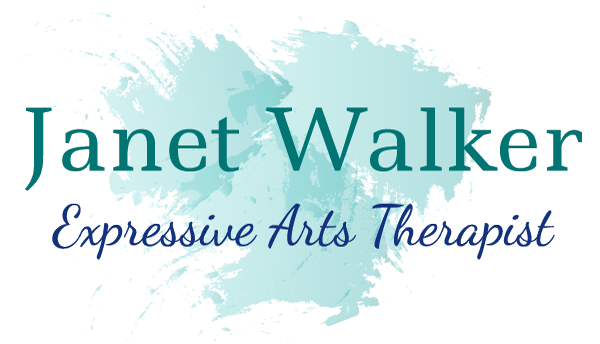With Expressive Arts Therapy, I offer the chance to work in a variety of artistic modalities including visual arts, dance or movement, theatre, music, and poetry, creative writing, storytelling or photography. I will help you be sensitive to all the sensations, feelings and ideas that come up for you as you work, as well as the possibilities that each art material offers. You might start by making a gesture with your hand, and then put that gesture into a shape as you mould some clay. Each artistic modality can access images and sensations in a different way, and moving from one modality to another can expand or deepen an image so that we can begin to “hear” the message that it is trying to tell us.
Play is an important element of Expressive Arts Therapy and of our work together. If you are coming to therapy because your relationship is breaking-up, you’ve lost a loved one, or you have experienced abuse, you are under great stress. It is possible that your whole body feels tight, and you feel stretched beyond coping like a taut rope. We step out of the difficult situation for a short while and “play around” with a variety of artistic approaches and materials. Unconsciously, this act of creative play works on our psyche and gives us the sense of a greater “range of play”, more options, and different ways to deal with the “tight” situations in our lives.
In an arts-based approach to therapy, you have the chance to create something with your own hands, voice, or body and be surprised by the appearance of images or forms that you weren’t expecting. You have the chance to exercise your imagination, and your imaginative capacity is a powerful tool and inner resource that you can take back to your everyday life to help you with the challenges and blockages that are weighing you down. You might have a sudden “flash” of insight, or an image may “speak” to you and give you a completely new point of view about the hard decision, the problem or the pain that has brought you to therapy.
Since your body, your emotions, and your mind are inextricably linked, information received through the senses can create an emotional reaction; colours, smells and movement such as dance can have a startlingly strong effect on your mood. Using the arts helps us ground ourselves in the body; using the body helps us get in touch with our emotions; being aware of our emotions enables us to process our past experiences and eventually make mental shifts and conscious decisions about whether we are going to hang on to these experiences or let them go.
Good Day, I Saw You Looming From Afar and I Am Dying of Hunger
I am empty
And yet,
Still going.
Where do I get the juice
When the well is bone-dry?
Deep into the well-spring,
Drilling
Nothing
Lower and lower,
Deeper and deeper
Hoping to hit water.
“Chose the wrong place to drill!”
“Should have got a water witcher!”
Come here, with your little twig,
Willow-wielder
Show me which way to walk
Up or downstream in this dry creek bed.
"I was dying, but now that you have come I live again."
In the middle of drought
You drink hope
Until you can get something else.
Art and Healing
A CBC News report and article (November 2018) called “Beauty Out of Pain: Canadian soldiers' embroidery was therapy for the scars of war” describes how embroidery helped men dealing with Post Traumatic Stress Disorder and the scars of the First World War. For those 145 men involved in creating the alter piece, housed at St. Paul’s Cathedral in London, the embroidery was “something which they were able to focus on to create, to lift them out of the awfulness of what they'd experienced”. It is stunningly beautiful.
What do a soldier and a 16-year old female heart transplant recipient have in common? A great video called Can Art Be Medicine? by The Foundation For Art & Healing explores how art can help diverse populations.
When I visited the Royal British Museum in 2007, all of my attention was seized by the installation “Cradle to Grave” by Pharmacopoeia, in which 28,000 pills were sewn into fabric in rows to represent the consumption of medicine by an average man and woman in the UK. “People love to take medicine. Our imaginations have allowed us to dream of finding compounds that will relieve our pain and suffering.” The artwork of Pharmacopoeia engages viewers in the debate around our relationship with medical treatments, encouraging us to examine our own medical and pharmacological history. All of Pharmacopoeia’s art installations are built with pharmaceutical pills and capsules (see the Artworks and Exhibitions pages of their website). They are moving works of art in themselves, and they also beg the question: Why do we depend on pills to heal us instead of healing ourselves with art?




